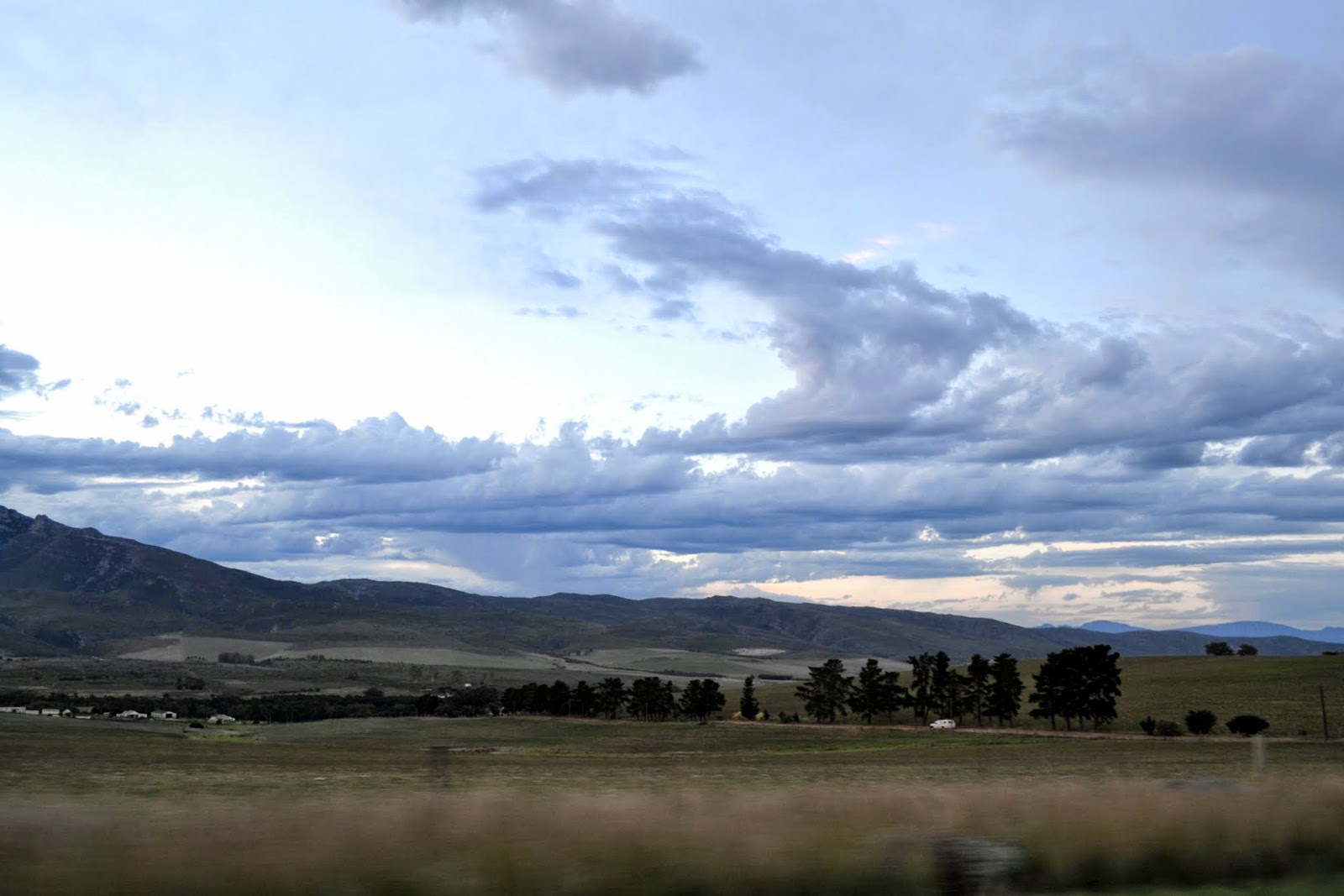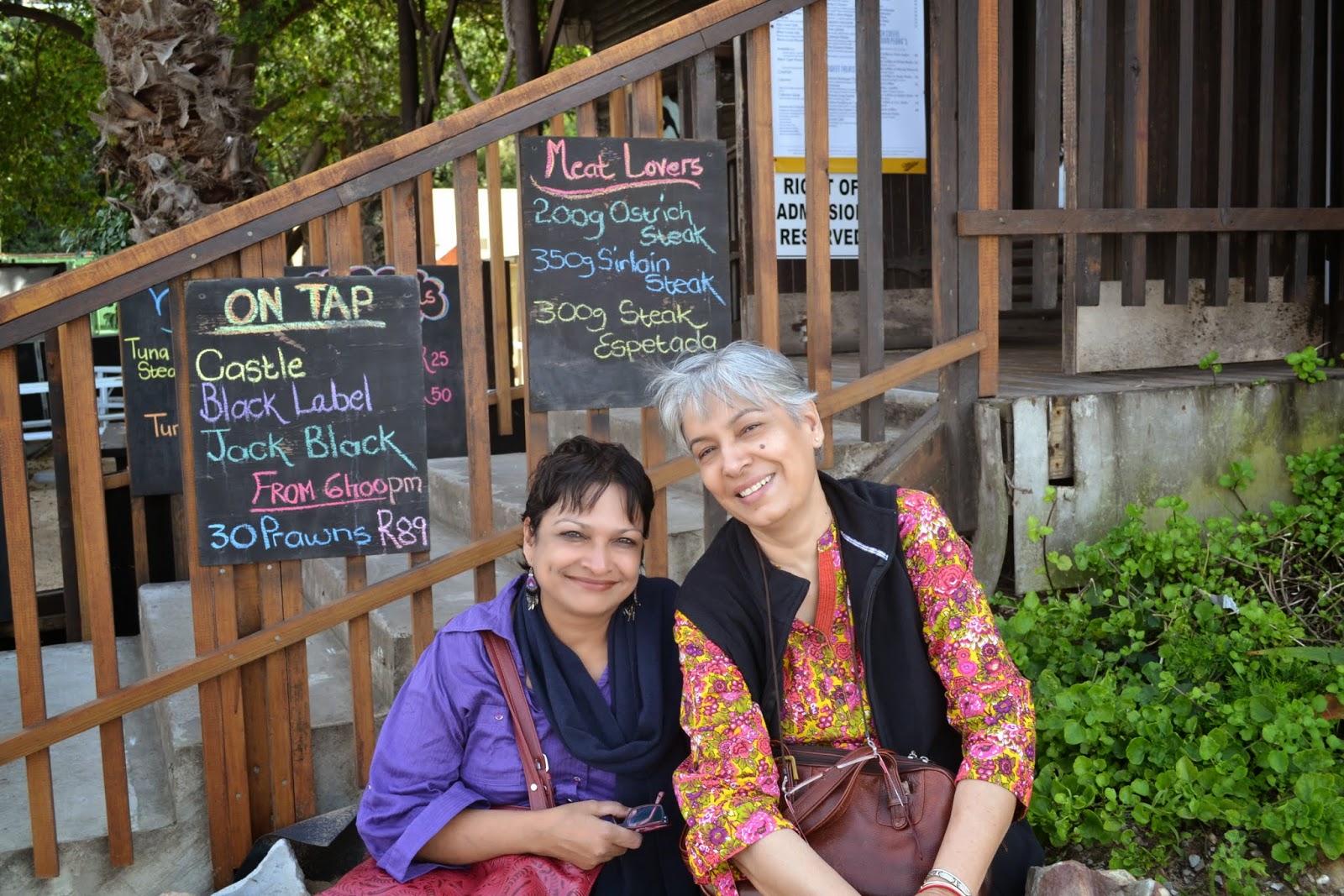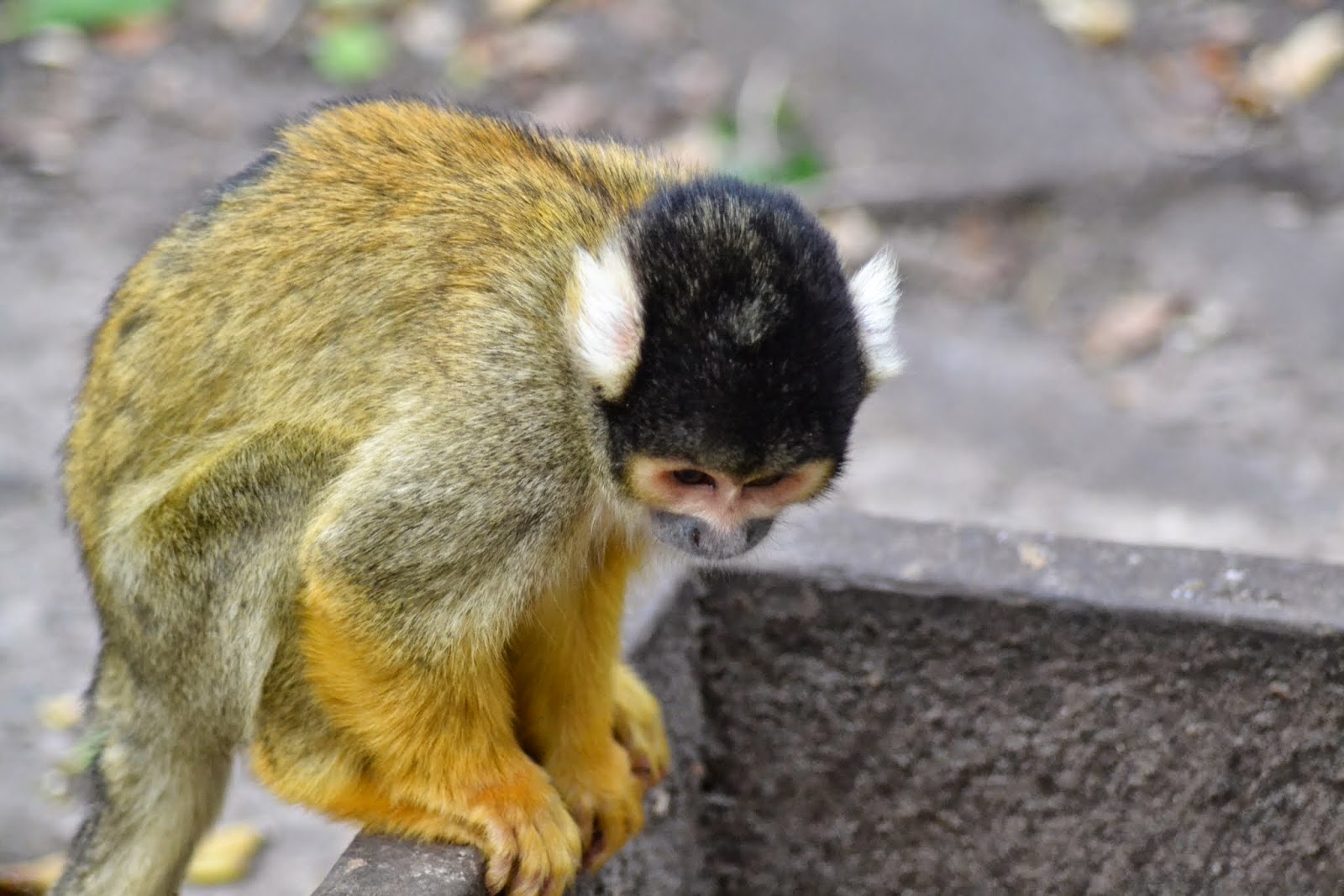After spending some time with Erik and Yipe planning
the day’s activities, we headed straight to Oudtshoorn, a town in the Western Cape Province.
The town is home to the world's largest Ostrich population, with a number of specialized ostrich breeding farms.
The drive itself is mesmerizing as one passes through Sedgefield, Wilderness
and George. Crossing the Oteniqua Mountains you enter the Klein Karoo with a
dramatic change to a rugged country-side. From the moment you enter this lovely
region, you will be struck by the vastness of the country.
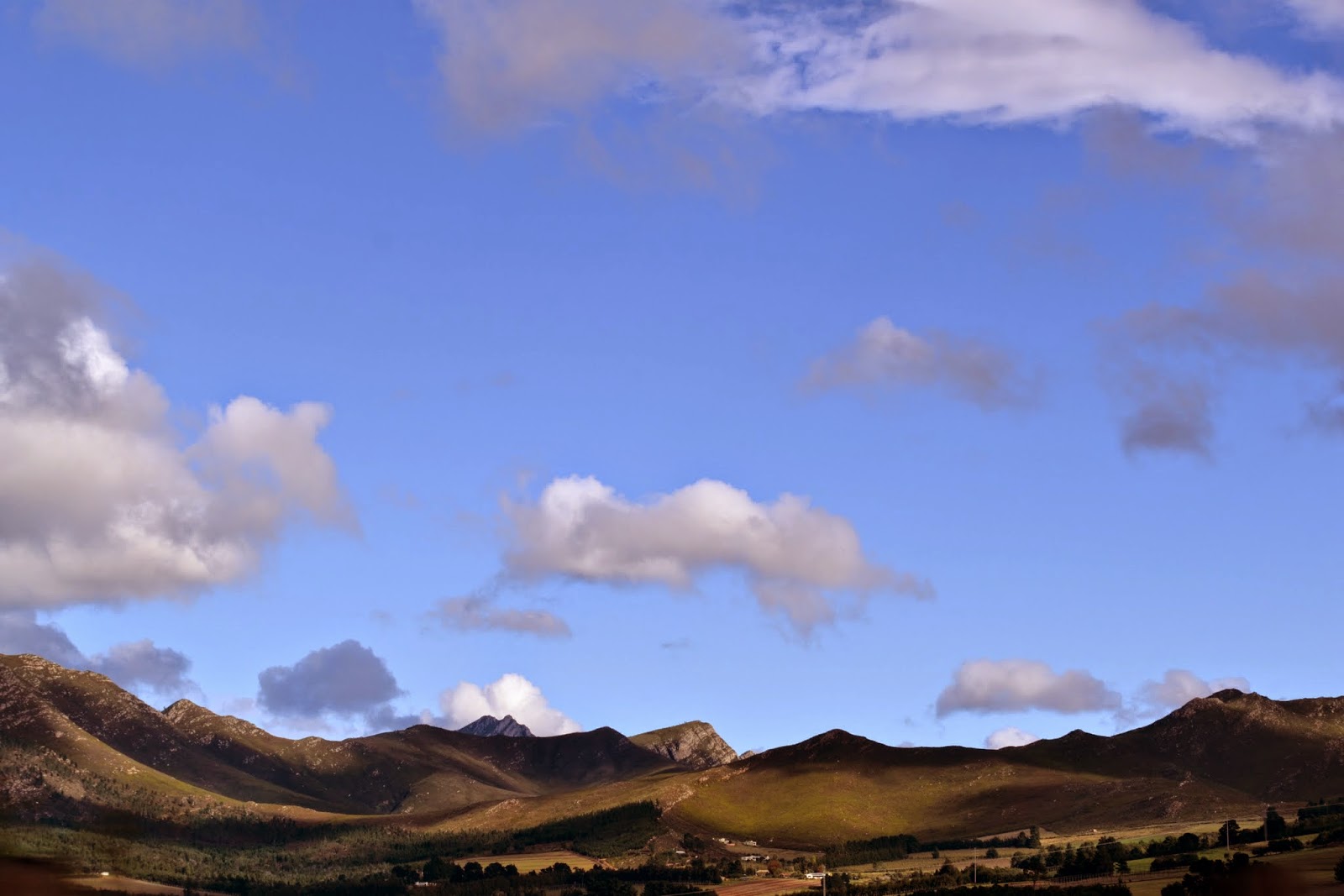 |
| Fascinating landscape |
As you drive along the plains, you suddenly see the
entire landscape full of Ostriches. For a first time visitor like us, the
sighting is truly thrilling and one stops the car to take a closer look.
 |
Welcoming Party
 |
| Very thrilled |
|
In the early 18th century, Ostrich feathers
become extremely popular as fashion accessories in Europe; they were especially
popular for use on hats. This resulted in a large number of farmers taking to
Ostrich farming over other agricultural products. Over a period of time it has
gained popularity for its lean and healthy meat.
 |
| Feathers adorn the hat of royalty |
Self and Kats had Ostrich steak. It is closer to
beef in its texture and taste.
We spent some time on the farm with the guide
telling us very interesting tidbits about Ostriches. In the earlier days people
used to build an ‘Ostrich Palace’ made of feathers. Every year they send around
5 tons of feathers to Rio for the carnival! Ostrich eggs are the biggest
eggs of any animal at an average of 3 pounds. Scrambled egg made out of one egg
can feed up to 17 people. Ostriches have no teeth and they swallow stones to
digest their food. They are known to eat a variety of items found on the ground
including long spoons, horns, spanners, water bottles, a variety of nuts and
bolts etc.
 |
| Amazing diet |
The ostrich usually weighs between 200 and 300 pounds and can grow up
to 9 feet tall. The males have black feathers with some white on the underside
and tail. The females are usually grey in color. An ostrich's eyes can be
nearly 2 inches in diameter giving them the largest eyes of any land animal.
They are extremely protective of their eyes. The guides always carry a thorny
bush stick to scare the ostrich if they become aggressive. Ostriches live off
of whatever they can find to eat. This includes plants, insects, and small
animals like lizards. They often live in herds with other ostriches.
 |
| Female Incubating |
 |
| Male Ostrich |
We were advised to protect our cameras as they are
known to make a go at them.
The Safari Ostrich Show Farm is spread over 1800
hectares and has 1200 birds. The birds live up to 60 human years. If one is
bald like me – be wary of the ostrich. In all probability it will confuse your
bald head to be one of its newly laid eggs and sit on it for 42 days incubating
it (in vain, I might add) with a very puzzled ostrich patiently waiting for the
outcome. J
All of us got a chance to sit on an ostrich, stand
on its egg (that’s how lightweight we are or how strong the egg is; take your
pick) and see an ostrich race with the jockeys clinging on for dear life! We
spent a very interesting morning.
 |
| Ride of a lifetime |
 |
| Some heavy weight |
 |
| Ostrich racing by the staff |
In the late afternoon, we visited ‘Buffelsdrift’
restaurant, located on ‘5 ha dam’ waterfront. The restaurant is on stilts. To
add to the grand picture, the waters below support a herd of Hippopotamuses (or
hippopotami whatever suits you).
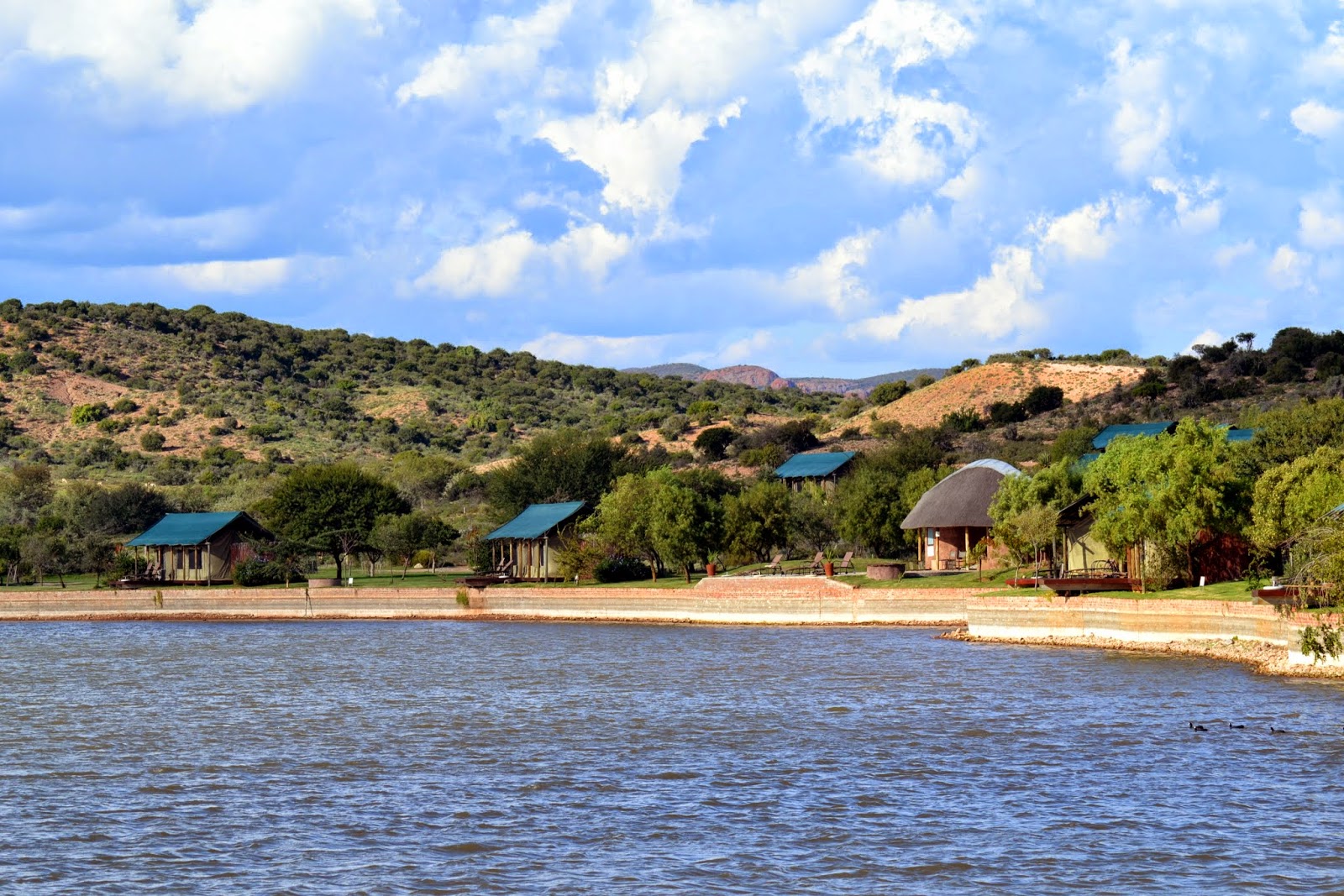 |
| View of the shacks |
 |
| Nile Hippos at the far end 800 to 1000 Kg |
 |
| Another view |
As we finished lunch, heavy and blinding rain
started lashing at us. We had to cancel our visit to ‘Cango Caves, and return
home. The Cango Caves are a series of dripstone caverns that open into vast
halls of towering stalagmite formations.
 |
| Final view of Knysna from our terrace |
09 May 2014 – Cango Wildlife Ranch
We drove down to Cango Wildlife Ranch situated 3 km
north of the town of Oudtshoorn. A very well maintained zoo, set up with the
aim of protecting endangered species. It is home to Trumpeters, Flying Foxes,
Red River Hogs, Designer Pigs, African Bush Pigs, Cape Vulture, Ring Tailed
Lemurs, Greater Flamingo, Nile Crocodiles, Pigmy Hippos, Spotted Necked Otters,
Marabou Stork, Corvettes, Cheetahs, Leopard, Tortoise, White Tigers and many
more.
Our visit to the zoo was a very satisfying
experience.
 |
| Red River Hog |
 |
| Pygmy Hippos - 280 Kg |
 |
| Marabou Stork |
 |
| Nile Crocodiles |
 |
| Most elusive cat - Cheetah |
 |
| White Bengal Tiger |
 |
| White Lioness Resting |
 |
| The king and his consort |
 |
| Albino out on a stroll |
 |
| Blue Duiker |
 |
| Cape Vulture |
 |
| Spot the cat |
Later that day, we made one more attempt to visit
the Cango Caves; unfortunately the cave was closed due to an accident.
On the way back we went to do a bit of wine tasting.
We had a tasty lunch in a very up market restaurant called ‘Jemima's in
Oudtshoorn. The place is really worth seeing as the owner has tried to maintain
the feel of a private home while catering to the public.
 |
| At the vineyard |
 |
| Fascinating interiors - Jemima's |
 |
| Private Room |
 |
| Photo op |
 |
| Very contended |
We ended our trip to Knysna on a very satisfying
note.


































